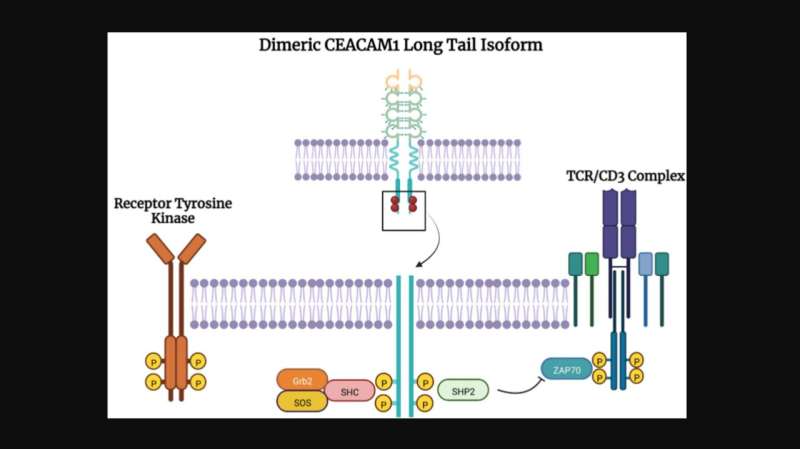This article has been reviewed according to Science X's editorial process and policies. Editors have highlighted the following attributes while ensuring the content's credibility:
fact-checked
proofread
CEACAMS 1, 5, and 6 in disease and cancer: Interactions with pathogens

A new review was recently published in Genes & Cancer, titled, "CEACAMS 1, 5, and 6 in disease and cancer: interactions with pathogens."
It explains that "Carcinoembryonic antigen (CEA), one of few FDA-approved biomarkers for cancer, was first identified and described in 1965 as a tumor-specific antigen expressed in embryonic gut, liver, and pancreas tissues, as well as gastrointestinal and respiratory malignancies, but not in differentiated adult tissues."
The CEA family comprises 18 genes and 11 pseudogenes located at chromosome 19q13.2 and is divided into two main groups: cell surface anchored CEA-related cell adhesion molecules (CEACAMs) and the secreted pregnancy-specific glycoproteins (PSGs). CEACAMs are highly glycosylated cell surface anchored, intracellular, and intercellular signaling molecules with diverse functions, from cell differentiation and transformation to modulating immune responses associated with infection, inflammation, and cancer.
In this review, researchers from the Donald and Barbara Zucker School of Medicine, Feinstein Institutes for Medical Research at Northwell Health, and Cold Spring Harbor Laboratory explored current knowledge surrounding CEACAM1, CEACAM5, and CEACAM6, highlight their pathological significance in the areas of cancer biology, immunology and inflammatory disease, and describe the utility of murine models in exploring questions related to these proteins.
"CEACAM1, 5, and 6 have shown their importance in gastrointestinal pathologies as they are closely involved with immune regulation, tumorigenesis, tumor suppression, and pathogen binding. Interrupting the interactions of CEACAM family members seems to be an interesting avenue of research, as it may be a useful tool in cancer therapy, and regulating immune activity in the context of IBD. However, much work has yet to be done in regard to the role of CEACAMs in cellular signaling and their effects on microbiome regulation," write the researchers.
More information: Jerin Thomas et al, CEACAMS 1, 5, and 6 in disease and cancer: interactions with pathogens, Genes & Cancer (2023). DOI: 10.18632/genesandcancer.230


















